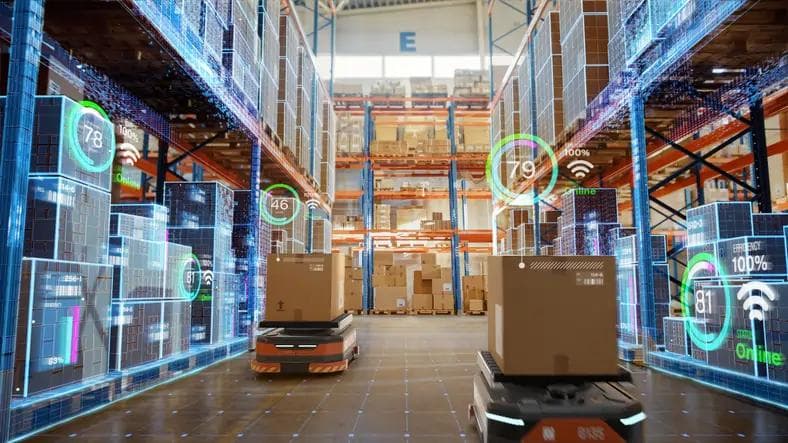What The Pandemic Has Taught Us About Remote Work
What The Pandemic Has Taught Us About Remote Work
Published by linker 5
Posted on November 23, 2020

Published by linker 5
Posted on November 23, 2020

By Anthony Lamoureux, Strategy and Development Director at Velocity Smart Technology
Before the turn of the decade – which already feels like it was at least a few millennia ago – remote working was something of a fringe professional concept. While nice in theory, many established businesses thought it might create more headaches than it was worth and, as such, was best left to the agile young start-ups who could afford to throw out the traditional corporate playbook.
While some forward-leaning businesses might have given employees the odd day to work from home, it was far from the norm. How could they be sure those employees would really get any work done? And without the watchful eye of middle management, what’s stopping them from turning a coffee break into an afternoon down the pub?
But one global pandemic later, and things are very different. Practically overnight, businesses no longer had the luxury of toying with the idea as a far-off possibility – they either had to adapt to a remote workforce or close shop altogether.
Has it been the unproductive mess many feared? Quite the opposite.
The revolution happened on a Zoom call
Not only are employees able to stay safe and socially distance – they’re often more productive, happier, and have more disposable income with less travel and eating out. This shouldn’t really come as a surprise, as studies have made the case for remote working for some time. A 2018 study by FlexJobs found that 65% of respondents were more productive when working from home, while a 2019 report by Owl Labs notes that 80% of remote workers are happy with their job, compared to 55% of on-site workers.
Businesses themselves are also realising the benefits of a remote workforce can lower their costs. Office space in London is the most expensive in the world – coming in at around 500 pounds per square foot per year for a prime location – so if having a grand central office isn’t as necessary as we’ve been all led to believe, CFOs will be placing that expense under increasing scrutiny. As Forbes contributor Amar Hussain affirms, the cost-saving implications of remote workers alone make it a huge draw.
With 73% of people in the UK believing that flexible working is the new normal, and future pandemics all but guaranteed, business leaders and IT directors need to ask themselves a few important questions. Is their workforce sufficiently equipped for remote productivity? Are they prepared for the challenges unique to this paradigm? What other parts of their business operations might be holding their business back? How can they ensure all remaining employee contact is COVID-19 secure?
Staying one step ahead of remote working challenges
Increased reliance on technology is the standout challenge of the new remote-working world. When every employee needs a functioning laptop and steady internet connection to connect with their peers and fulfil the bare minimum of their duties, they’re one technological hiccup away from grinding to an unproductive, radio-silent halt.
Remote tech support is nothing new, but it has unavoidable limitations. If an employee infects their machine with malware, a remote technician should easily be able to take control of the machine and remedy the situation without ever having to be in close proximity with the hardware or the click-happy employee. However, this technique is actually abused by scammers who trick their victims into installing a Remote Administration Tool that gives them free reign over their files, passwords, and other valuable info – so always err on the side of caution.
But when the hardware itself is the issue, many remote tech support solutions feel sorely out-dated. Say a member of your team accidentally knocks their work laptop off their makeshift balcony workstation. It falls 6 storeys and, against all odds, doesn’t survive intact. Now begins the long and arduous process of making contact with the tech team, handing in the broken machine and waiting for a replacement.
Even today, this kind of issue takes on average 2.9 days to resolve, and when that employee depends on their laptop for all their work, you’re looking at nearly three whole days of wasted time that will inevitably have an impact on the company’s bottom line.
Contactless IT support empowers the remote workforce
Thankfully, remote IT solutions exist that enable businesses to provide IT equipment to employees at all hours of the day – while meeting social distancing guidelines and ensuring devices are disinfected and collected safely. Smart Locker solutions allow employees to replace their IT assets within an hour, without having to deal with an IT technician or wait days for a workable machine. And with COVID-19 Secure features that include a Device Disinfect Check and Device Quarantine, employees can rest assured that their exposure to unwelcome pathogens is kept to the absolute minimum.
So what has the coronavirus pandemic taught us about remote working? In a nutshell, it’s here to stay. For a company to thrive in this new paradigm, it needs to evolve how it gives support to its remote employees to ensure they’re equipped and capable to give their all.
Explore more articles in the Business category











